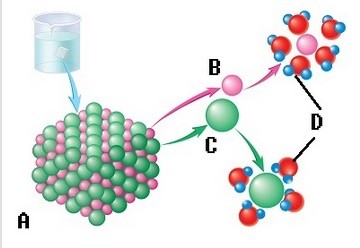Determine the sequence of the following events in a cell after exposure of the cell to a chemical signal
(1) increased synthesis of a protein
(2) the chemical signal combined with a cytoplasmic receptor
(3) an increase in the nuclear concentration of the chemical
(4) an increase in mRNA synthesis
(5) genes are activated
A. 1, 2, 3, 4, 5
B. 2, 1, 3, 5, 4
C. 2, 4, 5, 3, 2
D. 2, 3, 5, 4, 1
E. 2, 3, 4, 5, 1
D
You might also like to view...
What is the dens?
A. A rounded prominence on the vertebra prominens B. A tooth-like process on the axis C. A projection on the transverse process of cervical vertebrae D. A concavity unique to C1 E. A bony protrusion inferior to the costal facets
What is the largest part of the brain?
A. Cerebellum B. Cerebrum C. Brain stem D. Hypothalamus
As a thrombus breaks apart, what freely floating clot can cause serious problems downstream?
a. fatty streak b. cholesterol disc c. embolus d. protein plug e. LDL
 The sodium chloride molecule breaks apart in water. What does "D" represent?
The sodium chloride molecule breaks apart in water. What does "D" represent?
A. Dissociation B. Sodium ion C. Salt crystal D. Water molecule E. Chloride ion